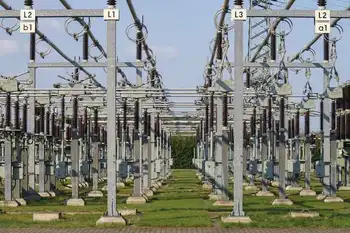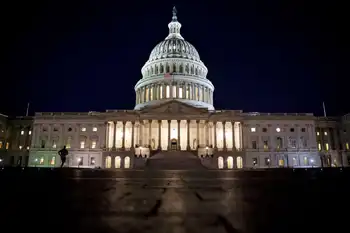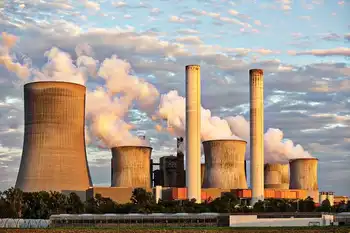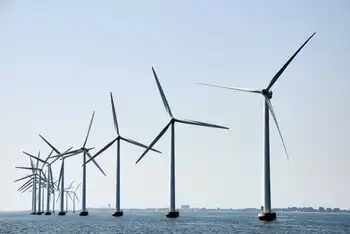Brazil moves to dam principal Amazon tributary
On the one hand, dam construction plays a critical role in the government's large-scale infrastructure initiative called the Program to Accelerate Growth (PAC). The PAC is a multi-year public works program designed to advance economic development by promoting incentives for infrastructure expansion, including building large dams in the Amazon.
On the other hand, the president from the Labor Party must confront the reality that the mega-projects in the Amazon could cause enormous and irreversible environmental and social impacts, and that they face considerable obstacles under Brazil's demanding environmental laws. President Lula now faces a major dilemma and so far has responded with frustration and cynicism.
The hot-button issue is the plan to build two large dams at the Santo Antônio and Jirau rapids on the Madeira River in the Amazonian state of Rondônia. The projects would dam the Amazon's principal tributary, causing dramatic changes to the riverine ecology and affecting thousands of families who depend on the river for income, nutrition, and agriculture. With a combined generating capacity of 6,450 MW, government energy planners insist the Madeira dams are essential to avoiding blackouts in the next decade.
Yet following more than two years of analysis, Brazil's environmental agency, IBAMA, recently issued a finding that it cannot give the go-ahead for the controversial project, citing insufficient information with which to make a decision. IBAMA ordered the project proponents — Furnas, a state electric company, and Odebrecht, a Brazilian construction giant — to submit a series of complementary studies to determine whether the project is "environmentally feasible," the criteria used under Brazilian law. The companies have now responded, and reportedly Lula has ordered IBAMA to conditionally approve the project, pending actions which supposedly could "mitigate" some of the project's most serious impacts.
IBAMA's decision comes at a time when the Environment Ministry, under the command of internationally renowned environmental advocate and former rubber tapper leader, Marina Silva, is becoming increasingly marginalized within the Lula government. The center-right and conservative political parties that participate in the governing coalition have gained strength and consistently oppose tighter environmental regulation. Still, Lula refused to fire Silva in his latest ministerial shake-up, an indication that her value as a symbol of the administration's commitment to environmental protection is greater than the discomfort caused by her insistence on maintaining environmental protection standards for the big-ticket projects Lula insists are needed to spur the country's economic growth.
The Brazilian electric sector has launched a torrent of criticism against the environment minister, claiming that IBAMA is holding up Brazil's development. Silva has held steadfast in affirming that "there is no timetable for approving the Madeira project." This has led the General Director of Brazil's Electrical Energy Agency, Jerson Kelman, to propose moving decision-making power for "strategic projects" (read, large dams in the Amazon and nuclear plants) out of the hands of IBAMA and placing it within the jurisdiction of the National Defense Council, an advisory body with participation of the military, among other government sectors.
Minister Silva did yield to pressure by announcing the restructuring of IBAMA, splitting the agency into two separate bodies, one entirely devoted to environmental licensing, and the other to administering protected areas, even though it is difficult to see how this will substantively break the deepening impasse. Facing impending cuts in budget and staff, IBAMA employees have gone out on strike, forcing the agency to hire consultants to complete the Madeira project's licensing.
A bill currently in the federal parliament would overturn constitutional human rights guarantees for indigenous peoples facing plans for hydroelectric dams on their lands, instead obliging them to accept royalties. Brazil's constitution holds that indigenous peoples "be heard" regarding plans for dams affecting their territories, a provision which courts have interpreted as requiring their informed consent.
The Madeira dam projects are indicative of the rough waters the government will have to navigate if it continues with plans to construct more than 60 large dams on the major rivers of Amazônia in the coming decades. The tendency has been to treat these projects as "a done deal." In the words of Brazilian energy specialist Sérgio Bajay of the University of Campinas, the electric sector wields "an iron hand." The government and companies deny that the project will have far-reaching impacts. An Odebrecht executive told a public hearing in Rondônia last May that "this is a different kind of dam project — it has nearly no impact on the environment."
Yet, independent studies commissioned by the state Public Attorney's office in Rondônia and by IBAMA confirm what environmentalists and social movements have feared — that the Madeira project would cause enormous impacts. These would be felt over thousands of kilometers, from the mouth of the mighty Amazon and up the Madeira into neighboring Bolivia and Peru. A principal factor is the Madeira's extremely high sediment load — the river carries millions of tons of clay, sand, and silt from the Andean slopes where it is born to the Amazon River, where it accounts for half of all the sediments along the lower Amazon.
Studies have shown that when the dams begin operation, the upstream Jirau reservoir would fill up with sediments, extending the flooded area into rainforests in neighboring Bolivia. The retention of these sediments behind the walls of the dams would also rob downstream floodplains of the precious nutrients that fertilize agricultural lands and help sustain the Madeira's incredible biodiversity — there are 750 fish species and 800 bird species along the ecological corridor of the Madeira. Government pressure on IBAMA to liberate the license for the project has received a boost from a study by a World Bank-funded hydrological consultant, who said that all the sediments would pass through the turbines, eliminating any impacts they would otherwise cause.
Related News

Manitoba Government Extends Pause on New Cryptocurrency Connections
WINNIPEG - The Manitoba government has temporarily suspended approving new electricity service connections for cryptocurrency mining operations. The decision comes as the province grapples with the cryptocurrency industry's growing energy demands and potential impact on electricity rates for residents and businesses.
The Original Pause
The pause was initially imposed in November 2022 due to concerns that the rapid influx of cryptocurrency mining operations could place significant strain on the province's electrical grid. Manitoba Hydro, the province's primary electric utility, warned that unregulated expansion of the industry could necessitate billions of dollars in infrastructure investments, potentially driving up electricity…





